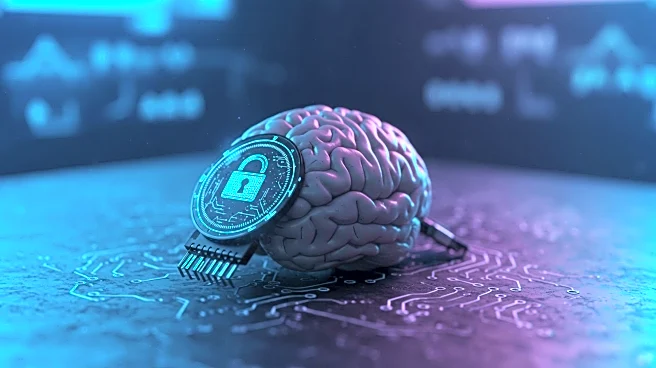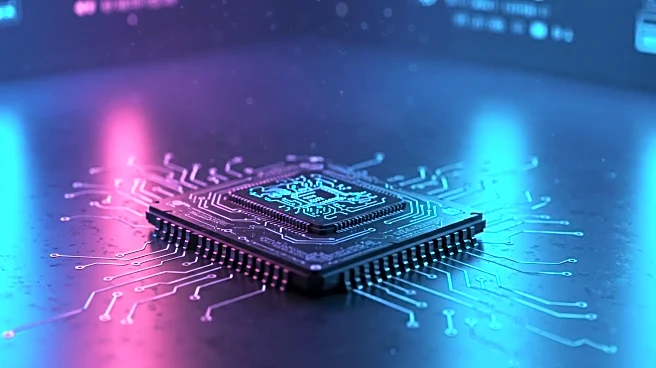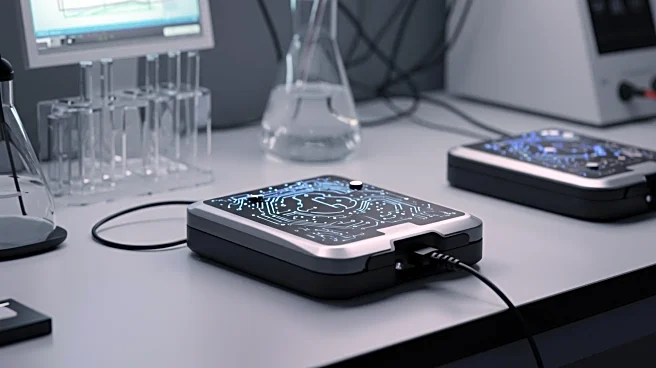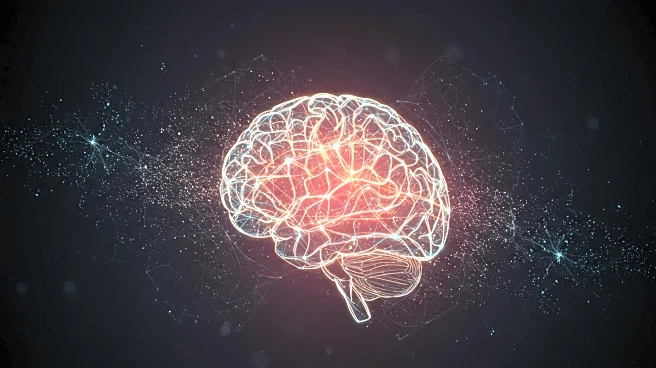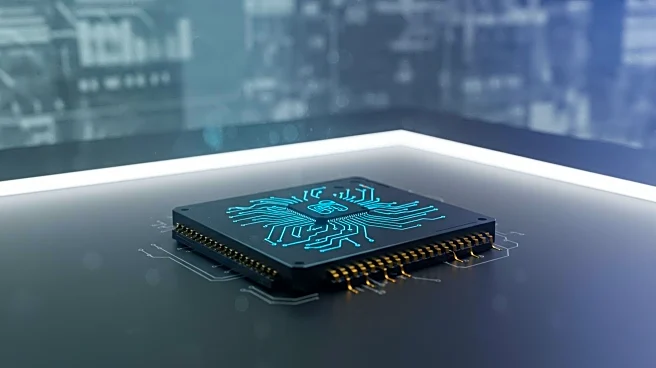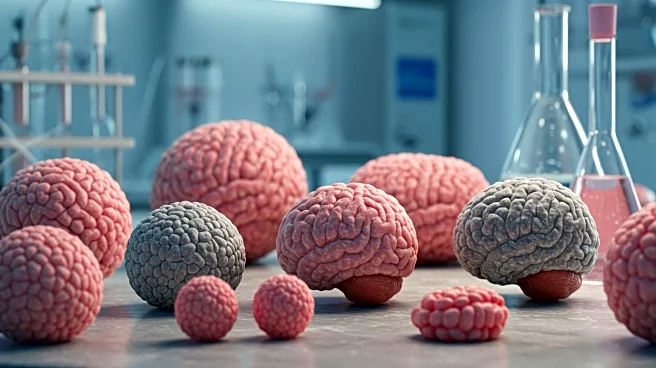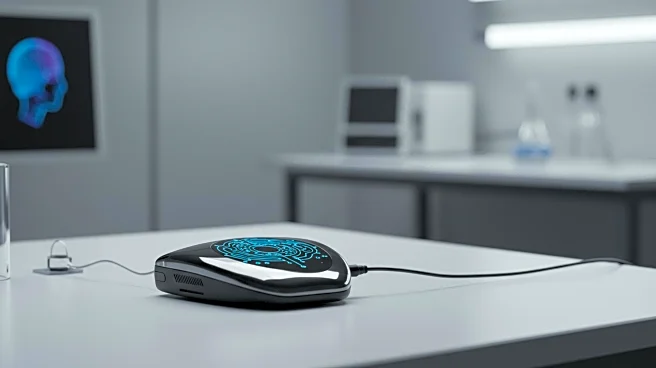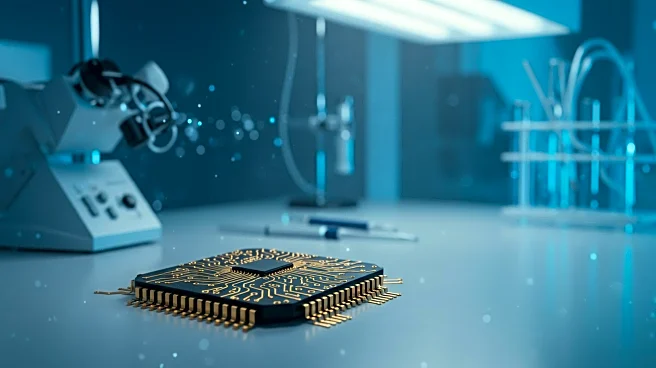What's Happening?
A recent study published in Cell has introduced a brain-computer interface (BCI) that can decode internal speech with a password protection feature. This device, which translates brain signals into text or audio, accurately deciphered up to 74% of imagined sentences. The system activates only when users think of a specific keyword, ensuring privacy by preventing accidental translation of unintended thoughts. The research, led by Erin Kunz at Stanford University, involved participants with speech difficulties due to stroke or motor neuron disease. The study demonstrated that both attempted and internal speech originate from the same brain region, allowing the BCI to interpret neural signals and convert them into speech using artificial intelligence models.
Why It's Important?
The development of this BCI technology represents a significant advancement in assistive communication devices, particularly for individuals with paralysis or limited muscle control. By incorporating a password mechanism, the device addresses privacy concerns, a critical factor for real-world applications. This innovation could greatly enhance the quality of life for people with speech impairments, offering them a more efficient and private means of communication. The technology also opens new avenues for further research into brain signal decoding, potentially leading to broader applications in neurotechnology and rehabilitation.
What's Next?
Future research will likely focus on improving the accuracy and reliability of the BCI system, as well as expanding its vocabulary and language processing capabilities. Researchers may also explore the integration of this technology with other assistive devices to create comprehensive communication solutions. Additionally, ethical considerations and user consent protocols will need to be developed to ensure the responsible deployment of such technologies.
Beyond the Headlines
The introduction of password-protected BCIs raises important ethical questions about privacy and consent in neurotechnology. As these devices become more sophisticated, there will be a need for clear guidelines to protect users from potential misuse or unauthorized access to their thoughts. This development also highlights the growing intersection of artificial intelligence and neuroscience, which could lead to transformative changes in how humans interact with technology.
